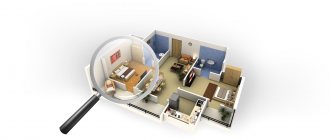Lost in translation: Crimean dormitories were considered “non-residential” objects
Municipalities are actively entering information about Crimean properties into the State Real Estate Cadastre.
For example, the ability of hostel residents to privatize their square meters depends on the mobility of this process. Is the fate of the hostels in question again? Anton VOLK
There are about 430 hostels in the republic, of which 177 are departmental. In previous years, their residents were able to privatize only 16% of the total area of these buildings. It is clear that people still hope to exercise their right to privatization.
The topic remained painful during the transition of Crimea to Russia. The right to privatize dorm rooms turned out to be not so simple. Until 2014, the transfer of private rooms to private ownership was not prohibited. But now Russian legislation does not allow room-by-room privatization.
An option to solve this problem was a banal change in the designation status of such houses by decision of municipal interdepartmental commissions. The purpose of the building (non-residential building, residential building or apartment building) is entered into the state real estate cadastre during the cadastral registration of objects.
As a result, almost 12 percent of dormitories had their status changed. They were re-registered as apartment buildings, that is, apartment buildings in which residents can now privatize rooms.
If a non-residential building is repaired at the expense of targeted contributions from citizens for major repairs, this will be an outright violation of the law
The problem arose, as they say, out of nowhere. A few months ago, the Ministry of Economic Development of the Russian Federation indicated to the state registration authorities in an official letter that in the Russian legislative field, dormitories can only have the status of “non-residential” buildings, we quote: “Determining the purpose of a dormitory building...
when carrying out state cadastral registration as an “apartment building” or “residential building” does not comply with current legislation; the purpose of a building such as a dormitory must be defined as a “non-residential building” (at the same time have the name “dormitory”, “apartment-type dormitory”).
Oksana Ignatovich, head of the department for accounting of capital construction projects of the State Committee for Register of the Republic of Kazakhstan, says:
– We clearly understand that dormitories, which are specialized housing stock and are in communal ownership or in use, it doesn’t matter, can be classified as residential. But we also have dormitories that are owned by legal entities (hospitals, sanatoriums, universities, etc.
), such buildings can in no way be classified as residential buildings. Only now the Ministry of Economic Development has expressed its position on dormitories... it clearly states that a dormitory is a non-residential building.
And if we look at the Housing Code of the Russian Federation, Articles 92-94, then we can only talk about the presence of residential premises in the hostel. That is, (according to the Housing Code) a “non-residential” building does not exclude the presence of “residential” premises.
Therefore, if there is a question about the privatization of these premises, provision of rent or registration, in this case it is necessary to register (registered - Ed.) residential premises in a non-residential building...
How to make renovation of “non-residential” hostels legal? Anton VOLK
Money bypassing status?
But not everything is so easily resolved against the backdrop of the new status of hostels.
In June 2021, the Ministry of Housing and Communal Services of Crimea announced that this year 262 dormitories will be renovated in Crimea and about 750 million rubles will be spent on this. A year ago, 30 dormitories were declared unsafe.
And to bring them all into divine form, 3.6 billion rubles are needed. So far, only four buildings in Yevpatoria have been urgently overhauled.
The question arises: is it possible to spend targeted funds allocated under the program for the overhaul of residential buildings on the repair of objects with the status of “non-residential”.
Now Crimean specialists from the State Registration Committee have registered more than 400 hostels for cadastral registration. And at the same time, they all received different status, that is, wording about the purpose of the building. And many hostels became municipal property with an initially “non-residential” status.
The situation in Saki is indicative. As the city administration explains, five hostels received five cadastral passports from the municipality. Half are registered as apartment buildings, and half are listed as non-residential real estate with residential premises.
At the same time, a major renovation of the dormitories is currently underway. The list of dormitories was approved by the Council of Ministers. It initially stated that all dormitories are residential buildings.
Upon receipt of cadastral passports according to Russian rules, these objects can no longer be included in the list of major repairs, because there is a contradiction. If a non-residential building is repaired at the expense of targeted contributions from citizens for major repairs, this will be an outright violation of the law.
And such an incident occurs not only in Saki, but in most regions of the republic. City administrations do not know what to do: to change or not to change the purpose of such objects to residential, and if changed, then on what basis?!
430 hostels in Crimea today.
Oksana Ignatovich explains:
– Municipalities have the right to introduce a resolution to change the purpose of a building. Therefore, if this non-residential building is not a corridor type, if there really is a breakdown into apartments, and (municipalities) make a decision to transfer the non-residential building to residential, we make changes to the cadastre.
But if we are talking about transferring information about a previously registered object, the Ministry of Economic Development has expressed its position on this matter. I would like to say that our local government bodies are still working poorly; only Simferopol, Belogorsk and Yevpatoria send us resolutions (on the transfer of non-residential to residential). No one sends any more decisions to the registration authority.
By not directing them, you are creating corruption for cadastral engineers...
Pay - and no nails!
Legal logic dictates that it will no longer be possible to demand contributions from residents of “non-residential” hostels for major repairs. The Housing Supervision Inspectorate has its own position on this matter.
The head of the housing supervision inspection of the Republic of Kazakhstan - the chief state housing inspector of the Republic of Crimea, Irina Kondratyuk, argues:
– How can dormitories be non-residential? In order to recognize a non-residential premises - a hostel or not a hostel, there is an order approved by the Government of the Russian Federation, and there is a certain procedure. I think this is a matter for the distant future, because they (dormitories - Ed.) need to be recognized, and not just considered “non-residential”, there are criteria.
Moreover, today we have management organizations that manage these houses quite legally; management agreements have been concluded with them. According to both the Housing and Civil Codes, they can be terminated only in court or by agreement of the parties. Therefore, it is not so easy to recognize them as uninhabited.
But if such a norm is introduced, it will entail a very large number of, firstly, changes to regulatory legal acts, and, well, to existing civil legal relations. And if you are asking a question about capital repairs, then capital repair programs, both long-term and short-term, have already been approved by regulations.
And they will also need to make changes. This is not such a simple procedure, it requires public discussion...
Completed and dedicated
Based on Article 92 of the Housing Code of the Russian Federation, residential premises in dormitories are classified as residential premises of a specialized housing stock.
In accordance with Article 94 of the Housing Code of the Russian Federation, “dormitories” include houses or parts of houses specially built or converted for these purposes, premises equipped with furniture and other items necessary for the residence of citizens and intended for temporary residence of citizens during the period of their work, service or training.
Source: https://gazetacrimea.ru/news/trydnosti-perevoda-24061
JavaScript must be enabled
· maintain utility storerooms (sheds) and adjacent passageways occupied in the basement and auxiliary premises of a residential building in proper technical, fire and sanitary condition, prevent the accumulation of garbage in them, the storage of explosives, flammable (combustible) liquids, gas cylinders and others flammable substances and materials, as well as the use of open fire;
We recommend reading: Civil Code of the Russian Federation inheritance article of the Civil Code
In accordance with Art. 155 of the Housing Code, if the owner of a residential premises, without good reason, has a six-month debt in payment for housing and communal services or has been brought to administrative responsibility three or more times during the year for violating the rules for the use of residential premises, the local executive and administrative body is obliged to warn the owner in writing about the need to repay the debt or eliminate the violations, and if they resulted in destruction and (or) damage to the residential premises, also assign the owner a proportionate period for repairing the residential premises.
How to convert a non-residential building into a dormitory
That the housing is located in a house In an area with developed infrastructure That each load-bearing structure complies with the standards for operation There is no deformation, cracks that may pose a danger to the health of residents That communications in a private house or apartment building are arranged so that there is no risk to the health of citizens What is all communications necessary for living - That there is no water leakage and a special device has been installed so that melt water does not penetrate
How can you convert non-residential premises into residential in 2021?
According to the Housing Code, isolated premises that are suitable for year-round living are considered residential. There are established sanitary standards (they are described in detail in SanPiN 2.1.2.2645-10), which these premises must fully comply with.
According to Article 22 of the Housing Code, incomplete compliance with the requirements is also allowed, but on the condition that the premises can be “brought to mind” and re-arranged at any time. Both entire private houses or apartments, as well as their parts, as well as rooms, are considered residential.
In some cases, dachas can also be recognized as residential if they are approved as permanent buildings, that is, the same private houses, but only if this is permitted by the conditions of use of the site on which the dacha is built.
Step-by-step instructions for converting non-residential premises into residential premises
- availability of room access to utilities;
- whether this premises is included in future plans for reconstruction of the building or major repairs;
- whether the building is an architectural monument;
- whether the building is under civil defense surveillance;
- whether the building is in disrepair, and whether it is going to be demolished soon.
How to convert residential premises into non-residential premises
- The person expressing a desire to change the status of the premises must be the owner of this area.
Applications for transfer from a person who does not own the premises, but, for example, rents them, will not even be considered. The lease term in this case does not matter. In addition, non-residential areas should not be pledged. If they were purchased on credit or a mortgage, the latter must be repaid in full. - The premises must comply with established standards (sanitary and technical) and fire safety rules.
Sanitary standards for residential premises are developed and approved by the Chief Sanitary Doctor of the Russian Federation, fire safety rules are based on orders and instructions of the Ministry of Emergency Situations of the Russian Federation. If any requirements of the rules and regulations are not met, the translation will be impossible. - The premises proposed to be converted into housing must be located in an urban area intended for human habitation and with developed infrastructure (water supply, electrical and gas networks, sewerage, heat supply).
- The premises must be technically sound; all its structures must not have deformations or damage that reduce operational characteristics. It should not pose a danger to the people who will live in it and to other residents. In addition, the courtyard area adjacent to such a premises, flights of stairs, and entrances must be safe.
Transfer of non-residential premises to residential premises
I own two adjacent rooms in a block-type dormitory on the 1st floor (a separate entrance can be made without problems). At the same time, the block of 8 rooms has been assigned the status of a communal apartment. Is it possible to transfer two of my rooms to non-residential premises? Are there any options at all? Thank you in advance.
How to transfer a dorm room to non-residential premises if it is part of a communal apartment
- Compliance with sanitary and technical standards. Dilapidated, unsafe condition, or harmful effects of environmental factors are not allowed.
- Ensuring that the building meets all necessary requirements must be possible and feasible.
- There should be no encumbrance on the transferred building as part of the property - the premises cannot be pledged, mortgaged or leased to third parties.
How to convert non-residential premises into residential ones
- It is allowed to use residential premises for carrying out business or professional activities, if this does not interfere with the people living in the apartment, as well as neighbors.
- an individual legally registered in the apartment
- The premises must comply with sanitary and epidemiological standards , and the house should not be in disrepair or subject to demolition.
Instructions for transferring residential premises to non-residential premises
- The transfer of non-residential premises to residential does not require payment of the difference in price (unlike the transfer of residential real estate to non-residential).
This is due to the fact that the cost of commercial real estate is usually higher than residential real estate. When changing the category, the cadastral value does not increase - which means there is no need to pay extra. - However, in most cases the translation requires re-planning.
Which also costs money. Often it is the reconstruction of the premises that “eats up” the largest part of the funds.
Changing the status of real estate: transferring non-residential premises to the residential category
Stage 2. All owners need to go to the BTI, to the housing privatization department and write an application, attaching some copies of the documents that were received earlier.
A special commission decides what the cost of such a transfer will be and draws up a corresponding protocol.
The difference between the cost of housing and the cost of the transfer must be paid at the bank, and only after that can you receive the protocol.
How to convert residential premises into non-residential premises
- Receive design documentation for the redevelopment and reconstruction of the building.
- Have written consents of all owners (if any).
- Sign a protocol with your neighbors to change the status. In this case, positive solutions should be 2/3 of the total area of the residential building.
- Prepare a number of necessary papers (the list is presented above) with copies of each of them.
- Contact Rosreestr with an application and a paid receipt of 350 rubles. Here you need to get an extract from the property register.
- Submit all specified documents to the City Administration or a single window.
- After all repair work is completed, invite a commission that will conduct an inspection and draw up a corresponding report.
- It should be taken into account that if the work may lead to a violation of the maintenance rules, the work will be stopped until the specified problems are eliminated.
If the owner of this premises has another apartment to live in, he is not at all concerned about this issue.
But buyers from other cities want not only to live in the apartments, but also to receive registration. This is where the need arises to transfer the premises to housing stock.
Converting non-residential premises into residential premises - step-by-step guide
And to be even more precise - when it is not legally registered as a place for residence: seasonal or permanent, but is intended for carrying out some kind of activity (commercial, creative, industrial, administrative, legal, etc.).
Are garden houses, dormitories and apartments residential or non-residential premises? Categories of commercial real estate for office
In legal practice, the transfer of non-residential premises to residential premises is not common. This happens because it is very labor-intensive and requires not only time, but also material costs.
As a result, it is easier in all respects to purchase an apartment or house than to bring the premises into a habitable state, which is not intended for this purpose.
In what cases is it permissible to transfer non-residential premises to residential premises, what documents are required for the transfer and how much this procedure will cost in 2021, you will find out in this article.
Please note => What Documents Are Needed to Obtain an Extract from the Unified State Register?
How to convert non-residential premises into residential ones if the administration does not want to do this
06 Dec 2021 yurisaktobe 85
Source: https://aktobeyurist.ru/nalogovye-vychety/kak-perevesti-nezhiloe-zdanie-v-obshhezhitie
Why it is impossible to transfer a dormitory from non-residential to residential
The body carrying out the transfer of premises, no later than three working days from the date of the decision, issues or sends to the address specified in the application, or through the multifunctional center, the corresponding document to the applicant (Part 5 of Article 23 of the Housing Code of the Russian Federation). In accordance with Part 7 of Art.
23 of the Housing Code of the Russian Federation, this document confirms the completion of the transfer of the premises and is the basis for using the premises as residential or non-residential premises, if such use does not require its reconstruction and (or) redevelopment, and (or) other work.
If such actions are required, then the specified document is the basis for their implementation.
As follows from paragraph 7 of Regulations No. 47, the assessment and inspection of premises in order to recognize it as a residential premises are carried out by an interdepartmental commission created for these purposes (hereinafter referred to as the commission), and are carried out for compliance with the requirements established in the Regulations.
The commission includes representatives of bodies authorized to conduct regional housing supervision (municipal housing control), state control and supervision in the areas of sanitary-epidemiological, fire, industrial, environmental and other safety, consumer rights protection and human well-being (hereinafter referred to as state supervision bodies (control), to carry out an inventory and registration of real estate located in urban and rural settlements, other municipalities, as well as, if necessary, representatives of architecture, urban planning and relevant organizations, experts, duly certified for the right to prepare expert opinions on design documentation and (or) engineering survey results.
Lost in translation: Crimean dormitories were considered “non-residential” objects
The situation in Saki is indicative. As the city administration explains, five hostels received five cadastral passports from the municipality. Half are registered as apartment buildings, and half are listed as non-residential real estate with residential premises.
At the same time, a major renovation of the dormitories is currently underway. The list of dormitories was approved by the Council of Ministers. It initially stated that all dormitories are residential buildings. Upon receipt of cadastral passports according to Russian rules, these objects can no longer be included in the list of major repairs, because there is a contradiction.
If a non-residential building is repaired at the expense of targeted contributions from citizens for major repairs, this will be an outright violation of the law. And such an incident occurs not only in Saki, but in most regions of the republic.
City administrations do not know what to do: to change or not to change the purpose of such objects to residential, and if changed, then on what basis?!
The problem arose, as they say, out of nowhere. A few months ago, the Ministry of Economic Development of the Russian Federation indicated to the state registration authorities in an official letter that in the Russian legislative field, dormitories can only have the status of “non-residential” buildings, we quote: “Determining the purpose of a dormitory building.
when carrying out state cadastral registration as an “apartment building” or “residential building” does not comply with current legislation; the purpose of a building such as a dormitory must be defined as a “non-residential building” (at the same time have the name “dormitory”, “apartment-type dormitory”).
Is it possible to convert non-residential premises into residential ones and how to do it?
Changing the status of an apartment in a multi-storey building is carried out only if the apartment is located on the first floor or above the first floor of the building. Premises located directly below an apartment being converted into a residential property are not considered residential.
For example, after closing a business, you still have space that was once used for an office. It no longer finds any practical use. Instead of renting it out, you want to convert the space you have into an apartment for living.
Resolution of the Twentieth Arbitration Court of Appeal dated in case no. a68-3408
By the decision of the Twentieth Arbitration Court of Appeal dated July 18.
2012, the decision of the court of first instance in case No. A68-734/2012 was left unchanged, while the court of appeal indicated that the right of economic management to the disputed object belongs to the Municipal Unitary Enterprise of the Moscow Region.
Tula "Skuratovskoye Housing and Public Utilities" was not registered, so the powers of the owner were not transferred to the bankruptcy trustee.
In accordance with Part 6 of Article 23 of the Housing Code of the Russian Federation, if it is necessary to carry out reconstruction, and (or) redevelopment of the premises being transferred, and (or) other work to ensure the use of such premises as residential or non-residential premises, the document specified in Part 5 of this article must contain a requirement for their implementation, a list of other works, if their implementation is necessary.
The procedure for converting non-residential premises into residential premises
A classic example is shops and offices on the ground floor of a multi-storey residential building. By law, non-residential premises can be located on the first, second and basement floors of residential buildings; there is no such restriction for detached non-residential buildings. So it will not be possible to convert an apartment located, for example, on the tenth floor, into non-residential premises by converting it into an office.
The transfer of residential premises to non-residential premises is regulated by special laws and regulations and is controlled by authorized bodies. This is necessary in order not only to record the status of real estate objects and keep their correct records, but to comply with sanitary standards and urban planning requirements.
How to transfer a house from non-residential to residential
- an application requesting the transfer of real estate from non-residential to residential;
- a copy of a passport or other identity document;
- title document for the house (sale and purchase agreement, certificate of inheritance, etc.
); - redevelopment and/or reconstruction project;
- conclusion of the SES and fire inspection that the house meets the requirements that the law imposes on residential premises.
The transfer of an object from the category of non-residential premises begins with a redevelopment and/or reconstruction project.
Such a project is drawn up when work is required to bring the facility into compliance with the sanitary, hygienic, technical, and fire safety requirements that residential premises meet.
Rules for living in an apartment building: basic provisions
Thus, residents of an apartment building, by mutual agreement, can include in the general set of rules almost any requirement regarding maintaining order in the common house. The most important thing is that the introduced rules do not contradict Russian laws and regulations.
We recommend reading: Number of the certificate of state registration of rights, series and number
The rules for neighbors living in the same house, established both at the legislative level and at the level of one specific house, are mandatory for all residents (apartment owners, members of their families, tenants and temporary residents) and even their guests and invitees.






